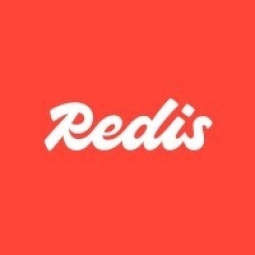技术
- 应用基础设施与中间件 - 数据库管理和存储
- 基础设施即服务 (IaaS) - 云数据库
适用行业
- 水泥
- 建筑与基础设施
用例
- 施工管理
- 库存管理
服务
- 云规划/设计/实施服务
关于客户
MyTeam11 是在线梦幻体育市场的全球新领导者,为板球、足球、卡巴迪、曲棍球、篮球、手球、排球、橄榄球和棒球等运动提供平台。该公司确保每个用户在任何比赛结束时都能获得利益和奖励。 MyTeam11 的梦幻体育游戏平台拥有超过 1500 万用户,其当前每秒 25,000 次操作的水平将增加一倍,其数据负载极其难以预测。其最受欢迎的幻想运动是板球,而板球球队直到比赛开始前 30 分钟才会发布他们的名单,这会造成高峰负荷,因为球员们会急于设定他们的幻想名单。
挑战
MyTeam11 是梦幻体育市场的全球领导者,其快速增长的用户群已超过 1500 万,因此面临着重大挑战。该公司的梦幻体育游戏平台正在经历极其不可预测的数据负载,将使其当前每秒 25,000 次操作的水平增加一倍。这在板球比赛前 30 分钟尤其明显,当时球队发布了名单,用户急于设置自己的梦幻名单,导致最后一刻的数据流量激增。该公司需要一个稳定、快速的数据库,能够应对数据峰值的弹性并确保无缝的用户体验。
解决方案
为了应对这一挑战,MyTeam11 实施了在 Amazon Web Services (AWS) 基础设施上运行的 Redis 云。该解决方案能够处理 MyTeam11 1500 万用户的所有数据,维护实时排行榜,并提供身份验证和会话管理。 Redis Cloud 的弹性可扩展性使 MyTeam11 能够处理板球比赛前 30 分钟内出现的峰值数据负载。与 MyTeam11 之前无法处理负载的 SQL 数据库相比,这是一个重大改进。此外,作为一项完全托管的服务,Redis Cloud 消除了 MyTeam11 团队的许多运营难题,使他们能够专注于开发战略性的全新应用程序。
运营影响
数量效益

Case Study missing?
Start adding your own!
Register with your work email and create a new case study profile for your business.
相关案例.

Case Study
System 800xA at Indian Cement Plants
Chettinad Cement recognized that further efficiencies could be achieved in its cement manufacturing process. It looked to investing in comprehensive operational and control technologies to manage and derive productivity and energy efficiency gains from the assets on Line 2, their second plant in India.

Case Study
IoT System for Tunnel Construction
The Zenitaka Corporation ('Zenitaka') has two major business areas: its architectural business focuses on structures such as government buildings, office buildings, and commercial facilities, while its civil engineering business is targeted at structures such as tunnels, bridges and dams. Within these areas, there presented two issues that have always persisted in regard to the construction of mountain tunnels. These issues are 'improving safety" and "reducing energy consumption". Mountain tunnels construction requires a massive amount of electricity. This is because there are many kinds of electrical equipment being used day and night, including construction machinery, construction lighting, and ventilating fan. Despite this, the amount of power consumption is generally not tightly managed. In many cases, the exact amount of power consumption is only ascertained when the bill from the power company becomes available. Sometimes, corporations install demand-monitoring equipment to help curb the maximum power demanded. However, even in these cases, the devices only allow the total volume of power consumption to be ascertained, or they may issue warnings to prevent the contracted volume of power from being exceeded. In order to tackle the issue of reducing power consumption, it was first necessary to obtain an accurate breakdown of how much power was being used in each particular area. In other words, we needed to be able to visualize the amount of power being consumed. Safety, was also not being managed very rigorously. Even now, tunnel construction sites often use a 'name label' system for managing entry into the work site. Specifically, red labels with white reverse sides that bear the workers' names on both sides are displayed at the tunnel work site entrance. The workers themselves then flip the name label to the appropriate side when entering or exiting from the work site to indicate whether or not they are working inside the tunnel at any given time. If a worker forgets to flip his or her name label when entering or exiting from the tunnel, management cannot be performed effectively. In order to tackle the challenges mentioned above, Zenitaka decided to build a system that could improve the safety of tunnel construction as well as reduce the amount of power consumed. In other words, this new system would facilitate a clear picture of which workers were working in each location at the mountain tunnel construction site, as well as which processes were being carried out at those respective locations at any given time. The system would maintain the safety of all workers while also carefully controlling the electrical equipment to reduce unnecessary power consumption. Having decided on the concept, our next concern was whether there existed any kind of robust hardware that would not break down at the construction work site, that could move freely in response to changes in the working environment, and that could accurately detect workers and vehicles using radio frequency identification (RFID). Given that this system would involve many components that were new to Zenitaka, we decided to enlist the cooperation of E.I.Sol Co., Ltd. ('E.I.Sol') as our joint development partner, as they had provided us with a highly practical proposal.

Case Study
Splunk Partnership Ties Together Big Data & IoT Services
Splunk was faced with the need to meet emerging customer demands for interfacing IoT projects to its suite of services. The company required an IoT partner that would be able to easily and quickly integrate with its Splunk Enterprise platform, rather than allocating development resources and time to building out an IoT interface and application platform.

Case Study
Bridge monitoring in Hamburg Port
Kattwyk Bridge is used for both rail and road transport, and it has played an important role in the Port of Hamburg since 1973. However, the increasing pressure from traffic requires a monitoring solution. The goal of the project is to assess in real-time the bridge's status and dynamic responses to traffic and lift processes.

Case Study
Bellas Landscaping
Leading landscaping firm serving central Illinois streamlines operations with Samsara’s real-time fleet tracking solution: • 30+ vehicle fleet includes International Terrastar dump trucks and flatbeds, medium- and light-duty pickups from Ford and Chevrolet. Winter fleet includes of snow plows and salters.








